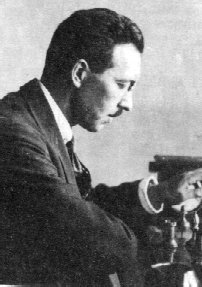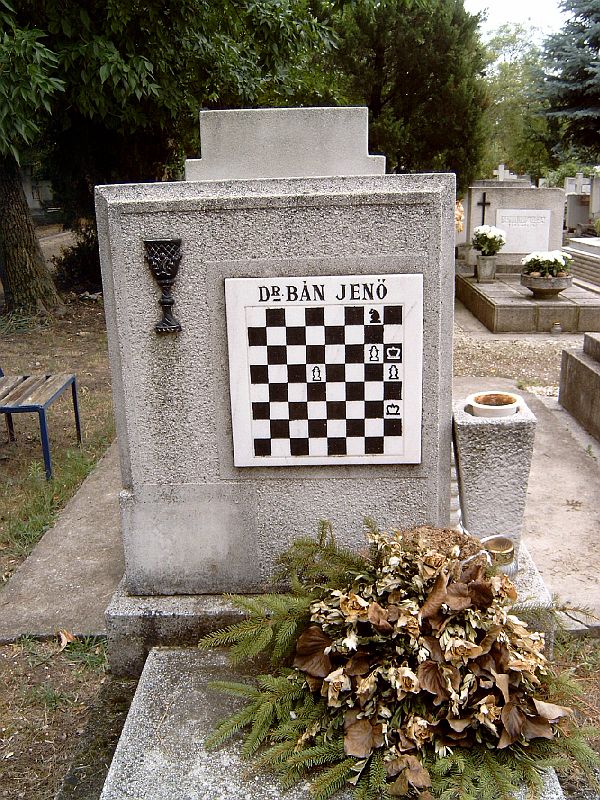 |
| Grigori Levenfish [Wikipedia] |
Grigory Yakovlevich Levenfish was a leading Russian chess grandmaster of the 1920s and 1930s. He was twice Soviet champion. Here for more details about his chess career.
Grigory Levenfish composed endgame studies with Vasili Smyslov and he also wrote "Rook Endings" together with the former World Champion (Smyslov admitted that all of the hard work was carried out by Levenfish.)
We have selected a game-like study from that book:
Show Solution
Flórián János Kovács (09-03-1901 - 07-06-1967) Hungarian composer
 |
| Flórián János Kovács [magyarsakkszerzok] |
Kovács had a pleasant style and was rather solver-friendly, which does not mean at all that his works were tasteless:
Show Solution
Show Solution
Jenő Bán (09-03-1919 - 12-11-1979) Hungarian player and composer
 |
| White wins Jenő Bán 1st Prize Tipografia 1961 [Wikipedia] |
Show Solution of the Study
Jenő Bán mostly composed endgame studies and helpmates. He was one of the founders of the Hungarian magazine Magyar Sakkelet and was its chief editor for 30 years.
 |
| Jenő Bán [magyarsakkszerzok] |
Show Solution
Lars Aksglæde Larsen (09-03-1919 - 27-03-2017) Danish composer and International Master
 |
| Lars Larsen [Problemskak.dk] |
Lars Larsen was a composer of a remarkable longevity and also an International Judge. He was a specialist of two- and threemovers and has published more than 2200 problems, of which more than 100 Bohemians. He has also written many articles (his first article in 1940!), mainly in the now defunct magazine "Thema Danicum", replaced by "Problemskak".
Show Solution
Михаил Николов Попов (09-03-1930 - 16-01-1970) Bulgarian composer (Mikhail Nikolov Popov)
Mikhail Popov was a fairy composer who would have certainly composed many more interesting problems if he had lived longer.
Show Solution
Валерий Анисимович Лисковец (09-03-1944) Belarusian composer (Valery Anisimovich Liskovets)
 |
| Valery Liskovets [goja.sk] |
"hc" means Consequent helpmate: "Helpmate" stipulation but the legality of the position is reconsidered (it must be possible to obtain it from the game-array position, White and Black playing alternatively) after each move.
Show Solution
Николай Васильевич Грива (09-03-1953) Ukrainian composer (Nikolay Vasilievich Griva)
 |
| Nikolay Griva [goja.sk] |
Show Solution
Klaus-Peter Zuncke (09-03-1954 - 15-11-2007) German composer
 |
| Klaus-Peter Zuncke [Wikimedia] |
Klaus-Peter Zuncke was specialised in three- and moremovers. He was a great expert of orthodox miniatures, had started a large collection of miniatures and was joined by Wolfgang A. Bruder for several years. His work was completed by Volker Felber and uploaded to the PDB.
Problems with symmetric position but asymmetric solution, which were fashionable in the 1920s and 1930s, were especially fascinating to him:
Show Solution
Федір Михайлович Капустін (09-03-1956) Ukrainian composer (Fyodor Mikhailovich Kapustin)
| Fyodor Kapustin [Thanks to Александр Никитин ] |
Show Solution
Владіслав Володимирович Тарасюк (09-03-1968) Ukrainian composer and International Master (Vladislav Volodimirovich Tarasyuk)
Vladislav Tarasyuk composes studies and has become an International Judge in 2017.
Show Solution
Emil Luukkonen (09-03-1888 - 14-11-1952) Finnish composer
Emil Luukkonen was a theater director and actor. He was a founding member of the Finnish Chess Problemists Association. More details about his life can be read on Wikipedia or in Suomen Shakki 2/1948 where a small article was published in celebration of his 60th birthday and 3 problems by Leo Valve, Jan Hannelius and I. Mäkihovi were dedicated to him.
He started composing chess problems in 1934. He composed direct mates and selfmates and sometimes endgame studies.
A twomover theme bears his name.
Luukkonen theme: In the set play several thematic defences are answered by one and the same mate. After the key of the solution the same mate is a threat, while thematic defences are followed by new and different mates.
You can find below an example of his theme and a threemover.
Show Solution
Show Solution





No comments:
Post a Comment